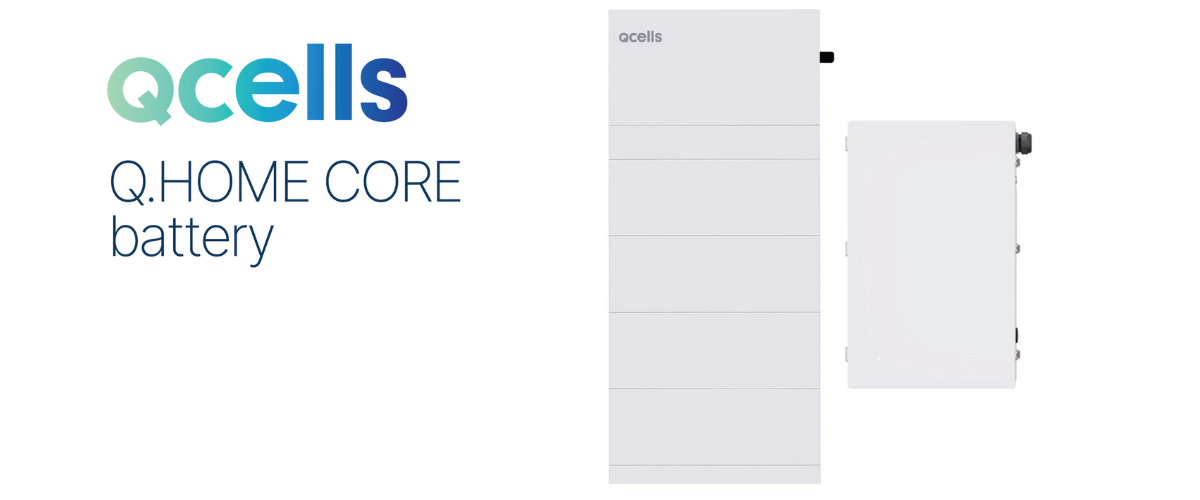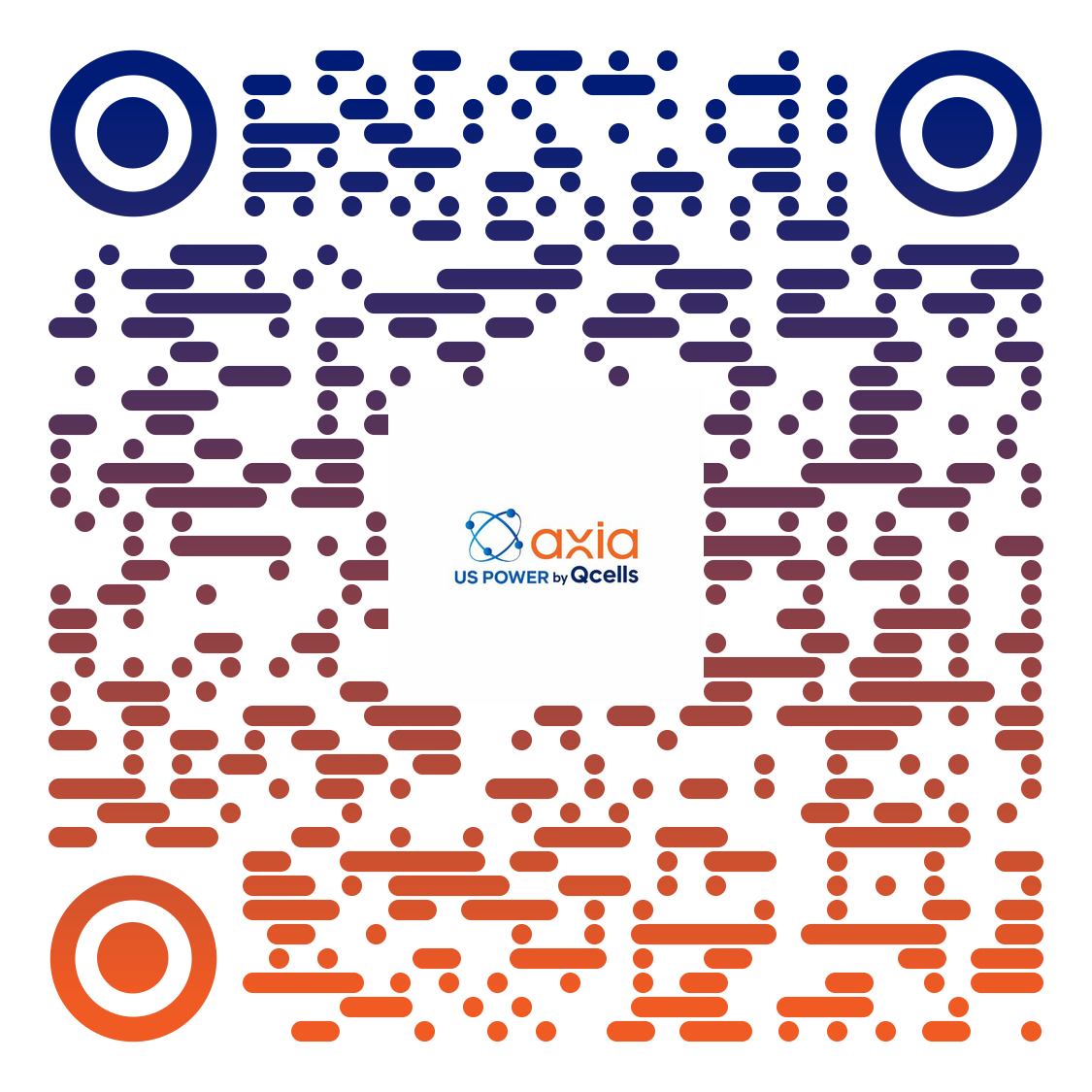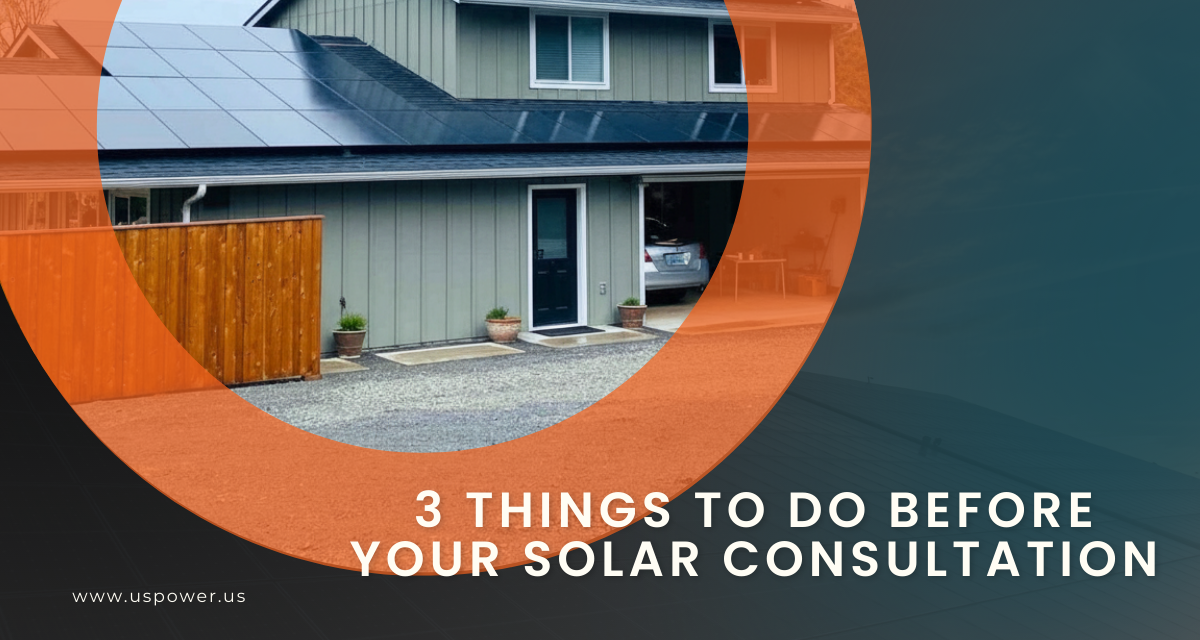Pros & Cons of Today’s Solar Batteries: A Guide for Homeowners

Solar and Roofing Advisor
Explore lithium, LFP, and QCells solar batteries approved by the CA Energy Commission. Compare solar battery pros and cons to save more in 2025.

When evaluating a solar + storage system for your Southern California home, choosing the right battery is critical. The battery determines how much of your solar energy you can store, how often you can use it, and how long the system will last. In this article, we’ll break down the major types of solar batteries, compare their pros and cons (especially in the California climate and regulatory environment), and explain why US Power’s exclusive partnership with QCells gives you a compelling edge.
Why Home Energy Storage Matters in 2025 (and Beyond)
Before diving into battery types, let’s review why battery storage is increasingly essential:
- Backup during outages: With grid outages (wildfire safety shutoffs, storms, rolling blackouts) becoming more frequent, a battery lets your home run essential loads when the grid is down.
- Maximizing self-consumption: Solar panels generate most power in midday; a battery allows you to use that excess later during peak evening rates rather than exporting at low compensation.
- Rate arbitrage and demand management: In many California utility zones, time-of-use (TOU) rates and demand charges mean that shifting when you consume electricity can lead to real cost savings.
- Incentives & compliance: Batteries approved on the California Energy Commission (CEC) list qualify for certain rebates or regulatory compliance paths.
- Future revenue streams: Some battery systems (like QCells’) can join demand response or virtual power plant (VPP) programs to earn incentives by supporting grid stability. Qcells North America+1
That said, a battery is not a “free upgrade”—it adds cost, complexity, and trade-offs. The ideal choice depends on your usage patterns, outage risk tolerance, budget, and local rebates/regulations.
Overview of Common Battery Chemistries in 2025
By 2025, most residential solar batteries fall into these primary categories:
| Battery Type | Chemistry / Subtype | Typical Use Case | Key Strengths | Key Weaknesses |
|---|---|---|---|---|
| Lithium-ion (general) | NMC / NCA / LCO variants | High-performance residential | High energy density, efficiency, compact | Higher cost, some risk of thermal runaway in lower-quality designs |
| Lithium Iron Phosphate (LFP) | A subtype of lithium-ion | Emerging industry favorite for home storage | Excellent cycle life, safety, thermal stability | Slightly lower energy density than NMC |
| Lead-Acid (Flooded, AGM, Gel) | Traditional lead-based chemistry | Very low-cost or off-grid/D.I.Y use | Low initial cost, long history | Heavy, bulky, lower depth of discharge, maintenance, shorter lifespan |
| Flow Batteries | Redox flow (vanadium, etc.) | Larger scale, long-duration storage | Long cycle life, fully "depth-of-discharge" flexibility | High cost, complexity, not widely adopted yet for homes |
| Emerging / Niche (e.g. saltwater, sodium-ion) | Various experimental chemistries | Future potential | Safer chemistries, less reliance on rare metals | Early stage, limited availability, lower energy density |
Let’s dive into each.
1. Lithium-Ion (General)
Pros:
- High energy density & compact form factor — ideal for space-constrained installations
- High efficiency (90–95 %) — minimal energy loss during charging/discharging
- Higher depth of discharge (DoD) — many systems allow 80 % or more usable capacity without damaging battery
- Relatively mature supply chain and market — many manufacturers and competitive options
Cons:
- Higher upfront cost relative to legacy chemistries
- Thermal and safety considerations — lower-quality designs or inadequate thermal management can risk “thermal runaway”
- Material sourcing concerns — some lithium-ion variants use cobalt or nickel, which raise cost and ethical sourcing challenges
- Cycle degradation over time — frequent deep cycling shortens useful battery life
Because of these weaknesses, the industry has gravitated toward Lithium Iron Phosphate (LFP) as a preferred variant for residential storage.
2. Lithium Iron Phosphate (LFP)
LFP is technically a type of lithium-ion chemistry, but its properties make it distinct—and in many cases, superior—for home energy storage.
Pros:
- Excellent safety & thermal stability — minimal risk of combustion or runaway
- Long cycle life — often rated for thousands of cycles (5,000–6,000+ cycles common)
- Deep depth of discharge — many systems can safely use nearly 100 % of capacity
- Lower degradation over time compared to many other Li-ion variants
- No cobalt or nickel needed, improving material sustainability and cost
Cons:
- Lower energy density vs high-nickel or cobalt-based Li-ion — you may need more physical volume for the same capacity
- Slightly higher cost per kWh (in some markets)
- More limited selection (though improving rapidly)— fewer models historically
Thanks to its advantages, many modern battery systems (including QCells’ Q.SAVE line) use LFP chemistry.
3. Lead-Acid (Flooded, AGM, Gel)
Once the dominant choice for battery storage, lead-acid is now mostly relegated to budget or off-grid niche systems.
Pros:
- Low upfront cost (per nominal capacity)
- Proven technology with decades of field use
- Relatively forgiving for shallow cycles (if well maintained)
Cons:
- Heavy, bulky, low energy density
- Low usable depth of discharge — typically limited to 50 % or less to avoid damaging the battery
- Maintenance requirements for flooded types (watering, equalization)
- Shorter lifespan — often 5–10 years under ideal conditions, less under heavy cycling
- Lower round-trip efficiency (≈75 %)
As such, in grid-tied home solar + storage systems, lead-acid is rarely the optimal choice unless cost constraints are extremely tight.
4. Flow Batteries (e.g. Vanadium Redox Flow)
Pros:
- Decoupled energy and power sizing — you can size the electrolyte independently of the stack
- Very long cycle life — minimal degradation over time
- Full depth-of-discharge without damage
- Instant responsiveness and good all-weather performance
Cons:
- High capital cost (especially for residential scale)
- Large footprint & complexity (pumps, tanks, plumbing)
- Fewer vendors and limited adoption in residential rooftop installations
- Efficiency lower than Li-ion in many cases
Flow batteries may find their niche in commercial or microgrid applications, but they are less common for typical Southern California homes in 2025.
5. Emerging / Niche Chemistries (Saltwater, Sodium-Ion, etc.)
These are early-stage technologies aiming to improve safety, sustainability, and cost.
Pros:
- Safer, less flammable chemistry
- Lower dependence on scarce metals
- Potential for very long cycle life
Cons:
- Low energy density
- Limited availability and support
- Immature supply chain and reliability records
While interesting to watch, these technologies are not yet mainstream in residential solar applications as of 2025.
Real-World Comparison & What Matters Most for Homes in Southern California
When choosing a battery for a home in Southern California, here are the critical performance metrics and how the chemistries compare:
| Metric | Why it’s Important | Preferred Range (for homes) | Best Chemistry Fit |
|---|---|---|---|
| Cycle Life (# of cycles) | Determines how many years of regular use | ≥ 3,000 cycles recommended | LFP excels |
| Depth of Discharge (DoD) | How much of the battery you can safely use | ≥ 80 % ideally | LFP and premium Li-ion |
| Round-Trip Efficiency | Energy lost during charge/discharge | ≥ 90 % preferred | Modern Li-ion, LFP |
| Calendar Degradation | Performance loss over time | Less than 2 % per year ideally | LFP often performs best |
| Safety / Thermal Stability | Especially for rooftop/garage installations | High tolerance to heat, low fire risk | LFP excels |
| Cost per Usable kWh | The actual economic measure | As low as possible over lifespan | Depends — Li-ion may win short-term, LFP long-term |
| Size / Weight | Practical for real homes | Compact profile | Li-ion / LFP preferred over lead, flow |
| Local Approval / Compatibility | Needs to be on CEC list in California | Must be approved to get rebates / utility compliance | QCells Q.SAVE is listed |
In practice, LFP stands out as the most balanced chemistry for home solar storage today. It offers excellent safety, long life, good efficiency, and evolving economics.
Why US Power Chooses QCells Q.SAVE Batteries
At US Power, we’ve forged an exclusive partnership with QCells to offer factory-direct, American-manufactured solar + storage systems. Here’s what that means for you:
- CEC-Approved Models
The QCells Q.SAVE D10.0SX and D15.0SX models are listed on the California Energy Commission’s Solar Equipment List, making them eligible for compliance and incentive programs in CA. - Integrated LFP Design
QCells uses LFP chemistry in its Q.SAVE line (within its Q.HOME CORE ecosystem) to deliver durability, safety, and performance. - Scalable, Modular System
You can stack multiple Q.SAVE modules (e.g. D10.0, D15.0, D20.0) to match your capacity needs. - Seamless Integration with QCells Panels and Inverters
Because QCells controls both the solar panel and storage side, you get optimized system synergy, simpler install, and a unified warranty. - Potential Grid Service / VPP Participation
In California, Q.HOME CORE systems (which include Q.SAVE batteries) can enroll in QCells’ Grid Service (VPP) program to help stabilize the grid and earn incentives, without reducing your credited solar export value. - Long Warranty & Cycle Commitment
QCells backs its system with strong warranties, reflecting confidence in its LFP technology and integrated design.
If you pair a QCells solar + battery system through US Power, you benefit from factory-direct pricing, lower markup, and a streamlined procurement and installation process.
Pros & Cons — What to Expect (and Trade-Offs)
To help you make an informed decision, here’s a refined, realistic list of pros and cons for solar battery systems in 2025—with emphasis on what matters in Southern California.
✅ Advantages (Pros)
- Energy Independence & Resilience
A home battery ensures critical loads (lights, refrigerator, medical equipment) can run during outages—even when the grid fails. - Better Use of Your Solar Energy
Instead of exporting surplus at low rates, you store and use it during peak evening periods. - Cost Savings Under TOU / Demand Pricing
By shifting consumption, you avoid high tariff hours and reduce your utility bills. - Regulatory & Incentive Alignment
Using CEC-listed batteries (like Q.SAVE) ensures eligibility for state rebate programs or regulatory compliance. - Earning Through Grid Services
Batteries that participate in VPP or demand response programs can generate additional income or credits. - Lower Lifetime Cost via High Durability
A well-designed LFP system can last 15+ years with minimal degradation, lowering levelized cost of storage over its lifetime.
⚠️ Disadvantages (Cons / Trade-Offs)
- High Upfront Cost
Batteries add a significant cost to the system. Current typical installed costs (2025) often range from $1,000 to $1,500+ per kWh of usable storage. - Return on Investment (ROI) Takes Time
Depending on your usage, it may take 5 to 10 years or more to recoup the investment through savings and incentives. - Sizing and Overbuild Risk
Oversizing leads to wasted capital; undersizing leaves you without adequate backup when you need it most. - Cycle Wear and Degradation
All batteries degrade over time. Even durable LFP systems will lose capacity gradually with age and cycling. - Efficiency Losses & Round-Trip Loss
Even top-tier batteries have ~5–10 % loss during the charge/discharge process. - Complexity & Maintenance
While modern systems are largely “set and forget,” they still require proper monitoring, management, and occasional firmware or hardware updates. - Incompatible or Poor Quality Systems
Cheap or mismatched battery systems may fail prematurely or pose safety risks.
In short: battery storage is powerful, but only if sized smartly, installed properly, and matched to realistic usage.
How to Choose the Right Battery Setup for Your Home
Here’s a step-by-step approach to selecting the best battery system:
- Analyze your daily load curve and evening usage
See how much electricity you use in peak rate hours (5pm–10pm). - Decide your backup needs
Do you want full-home backup or only critical loads (refrigerator, lights, outlets)? - Estimate needed capacity in kWh
Use your load data and desired hours of backup as input. - Choose a battery chemistry and manufacturer
For CA homes, LFP (like QCells Q.SAVE) is a top balance of performance, safety, and durability. - Check CEC / Utility compliance
Only choose batteries listed on the CEC equipment list if you want rebate eligibility or simplified permitting. Q.SAVE D10.0SX and D15.0SX are on that list. - Evaluate integration & compatibility
Prefer integrated systems (panel + storage from same maker) to reduce inter-component inefficiencies. - Get multiple quotes and cost breakdowns
Compare cost per usable kWh, installation, warranty, and anticipated ROI. - Include monitoring, support & warranty
Ensure you have remote diagnostic capability and robust warranties (10+ years ideally).
Why US Power Is Your Ideal Local Partner
As a Southern California solar installer, US Power brings local expertise, high-efficiency component selection, and a unique value proposition:
- Factory-Direct with QCells — no middleman markup
- CEC-Listed Batteries (Q.SAVE D10.0SX, D15.0SX) for compliant installations
- Seamless System Efficiency — panels + inverters + batteries from a unified design
- Local permitting and grid experience — we know CA’s incentives, permitting traps, and utility interconnection
- Proven performance and warranties — we back the system we design
- Access to future programs like VPP via QCells for additional homeowner benefit
Call to Action — Secure Your Home’s Energy Future Today
Don’t just adopt solar — empower it. The right battery can turn your rooftop into a resilient, efficient energy hub.
➡️ Schedule your free, no-obligation solar + storage consultation today
➡️ Let US Power show you how factory-direct QCells Q.SAVE D10.0SX or D15.0SX modules can maximize your system’s efficiency and savings
➡️ Lock in 2025 incentives before they change — many battery rebates and tax credits are phasing down
In just a few minutes, you’ll see:
- What battery capacity makes sense for your home
- How long your ROI could be
- What your monthly electric savings might look like
- Whether VPP or grid program enrollment adds value
Act now —Schedule a Free Solar Consultation— the sooner you start, the faster you lock in savings, independence, and peace of mind.
Related Articles
Our Related Blogs
Prepare effectively for your solar consultation with these essential steps.
Before choosing your solar system, compare the leading brands head-to-head.
Cut peak power costs in California with four smart ways to reduce demand charges.
Our Solar and Roof Brand Partners








We empower communities and businesses to harness clean, renewable solar energy solutions that drive sustainable growth.
Ready to Own Your Power? Call us today!
818-650-8010
Copyright © 2025 US Power - Axia by QCells. All Rights Reserved.
Privacy is important to us, so you have the option of disabling certain types of storage that may not be necessary for the basic functioning of the website. Blocking categories may impact your experience on the website.
Essential
These items are required to enable basic website functionality.
Personalization
These items allow the website to remember choices you make (such as your user name, language, or the region you are in) and provide enhanced, more personal features.
Marketing
These items are used to deliver advertising that is more relevant to you and your interests.
Analytics
These items help the website operator understand how its website performs, how visitors interact with the site, and whether there may be technical issues.
We and our third-party partners use cookies and other technologies to enhance and track your experience on this site, conduct analytics, and personalize marketing to you. By using the site, you agree to our use of these technologies, including recording and monitoring your interactions with the site.
Get an instant solar estimate using satellite!









